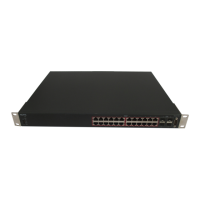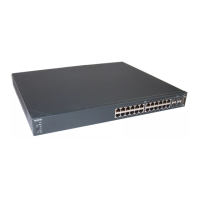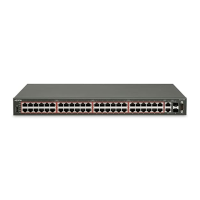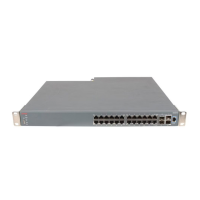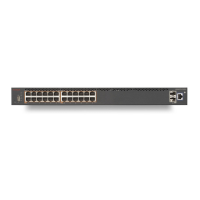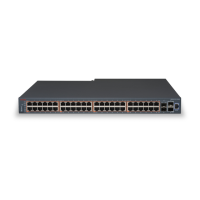Each LLDPDU includes the following four mandatory TLVs:
• Chassis ID TLV
• Port ID TL
V
• Time To Live TLV
• End Of LLDPDU TLV
The chassis ID and the port ID values are concatenated to form a logical MSAP identifier that
the recipient uses to identify the sending LLDP agent and port.
A non-zero value in the Time to Live (TTL) field of the TTL TLV indicates to the receiving LLDP
agent how long the LLDPDU information from the MSAP identifier remains valid. The receiving
LLDP agent automatically discards all LLDPDU information, if the sender fails to update it in
a timely manner. A zero value in TTL field of Time To Live TLV tells the receiving LLDP agent
to discard the information associated with the LLDPDU MSAP identifier.
From Release 5.1 and on, in addition to the four mandatory TLVs, switch software supports
the TLV extension set consisting of Management TLVs and organizationally-specific TLVs.
Organizationally-specific TLVs are defined by either the professional organizations or the
individual vendors that are involved with the particular functionality being implemented. You
can specify which of these optional TLVs to include in the transmitted LLDPDUs for each
port.
For more information about the supported TLV extension set, see the following:
•
Basic management TLV set on page 65
• IEEE 802.1 organizationally-specific TLVs on page 66
• IEEE 802.3 organizationally-specific TLVs on page 66
Basic management TLV set
The basic management TL
V set contains the following TLVs:
• Port Description TLV
• System Name TLV
• System Description TLV
• System Capabilities TLV (indicates both the capabilities and current primary network
function of the system, such as end station, bridge, or router)
• Management Address TLV
Beginning with Release 5.5 the switch supports IPv4 and IPv6 management addresses and
the transmission of all TLVs from the basic management TLV set is enabled by default.
Connectivity and management information
Configuration — System April 2011 65

